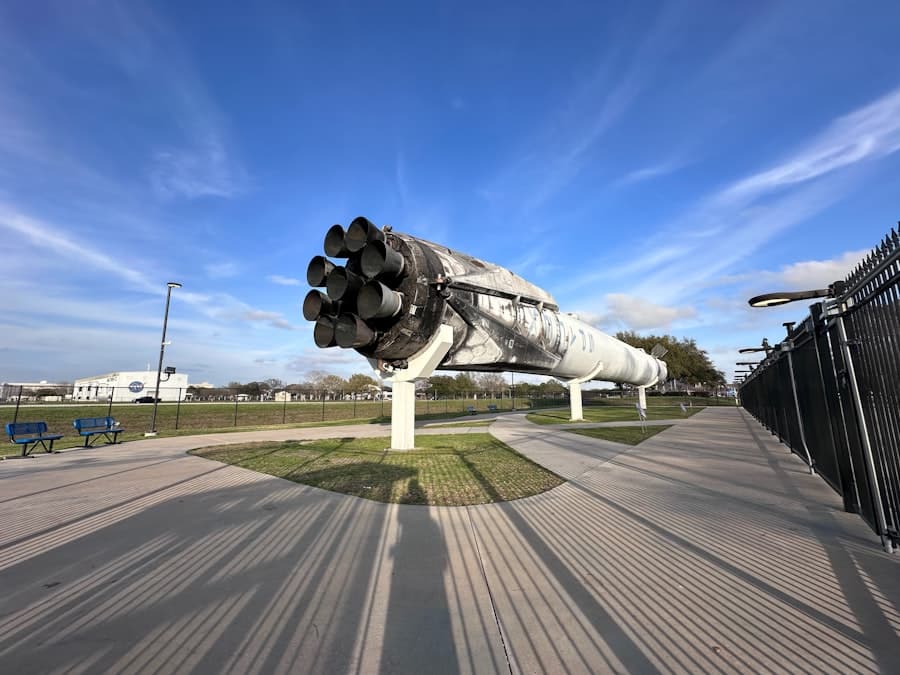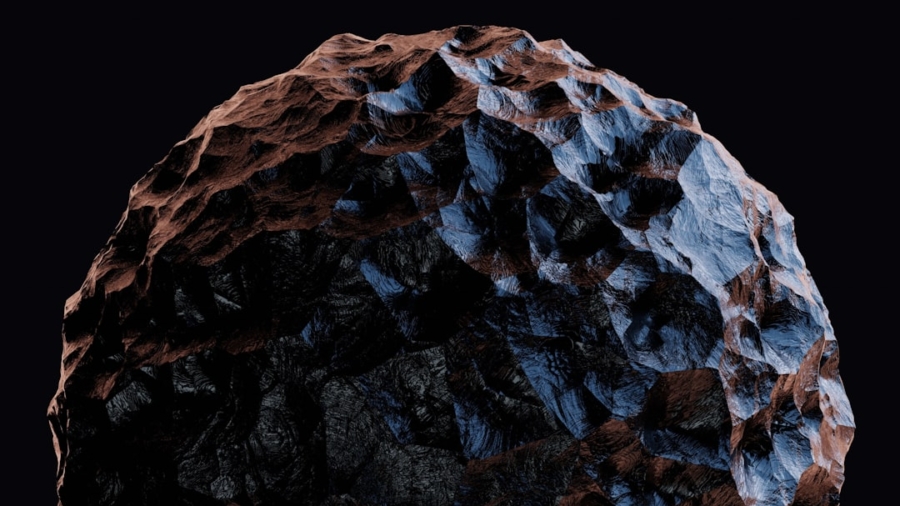Asteroids, remnants from the early solar system, pose a significant threat to Earth due to their potential for catastrophic collisions. These celestial bodies vary in size, composition, and trajectory, with some measuring just a few meters across while others can be several kilometers in diameter. The impact of even a small asteroid can unleash energy equivalent to that of a nuclear bomb, while larger asteroids could lead to mass extinctions, similar to the event that is believed to have wiped out the dinosaurs approximately 66 million years ago.
The frequency of such impacts is not negligible; scientists estimate that Earth experiences a collision with a small asteroid roughly every 10 years, while larger asteroids capable of causing widespread destruction may strike every few hundred thousand years. The potential consequences of an asteroid impact are dire. A collision with a large asteroid could result in massive tsunamis, wildfires, and a “nuclear winter” effect due to debris blocking sunlight.
The aftermath could lead to severe climate changes, disrupting ecosystems and food supplies. Given the unpredictability of asteroid trajectories and the vastness of space, the challenge lies not only in identifying these threats but also in developing effective strategies to mitigate their impact. As our understanding of these celestial bodies deepens, it becomes increasingly clear that proactive measures are essential to safeguard our planet from potential disaster.
Key Takeaways
- Asteroid collisions pose a significant threat to Earth and can cause widespread destruction.
- Current approaches to asteroid defense include deflection and disruption techniques to alter the asteroid’s trajectory.
- Space agencies play a crucial role in asteroid defense through research, monitoring, and potential mitigation missions.
- Proposed asteroid defense technologies include kinetic impactors, nuclear explosions, and gravity tractors.
- Challenges and limitations of asteroid defense systems include funding, international cooperation, and the need for early detection and monitoring.
Current Approaches to Asteroid Defense
In recent years, various approaches have been developed to address the threat posed by asteroids. One of the primary strategies involves tracking and monitoring Near-Earth Objects (NEOs) using ground-based telescopes and space-based observatories. Programs like NASA’s Near-Earth Object Observations (NEOO) and the European Space Agency’s (ESA) Space Situational Awareness (SSA) initiative focus on identifying and cataloging asteroids that come within close proximity to Earth.
By maintaining a comprehensive database of these objects, scientists can better predict their trajectories and assess potential collision risks. Another approach involves developing deflection techniques aimed at altering an asteroid’s path to prevent a collision with Earth. This can be achieved through kinetic impactors, which involve sending a spacecraft to collide with an asteroid at high speed, thereby changing its trajectory.
The success of such missions relies heavily on precise calculations and advanced technology to ensure that the impact alters the asteroid’s course sufficiently to avoid an Earth-bound trajectory. While these methods are still largely theoretical, they represent a proactive stance toward planetary defense.
The Role of Space Agencies in Asteroid Defense

Space agencies play a pivotal role in asteroid defense through research, monitoring, and the development of mitigation strategies. NASA has been at the forefront of these efforts, launching missions such as NEOWISE, which has successfully identified thousands of NEOs since its inception. Additionally, NASA’s Planetary Defense Coordination Office (PDCO) coordinates efforts across various agencies and organizations to ensure a unified response to potential threats.
This office is responsible for assessing the risk posed by NEOs and facilitating international collaboration in planetary defense initiatives. The European Space Agency (ESA) has also made significant contributions to asteroid defense through its Hera mission, which aims to study the binary asteroid system Didymos and its moonlet Dimorphos. By understanding the physical properties and behavior of these asteroids, scientists hope to refine deflection techniques and improve predictive models for future threats.
Other space agencies, such as the Indian Space Research Organisation (ISRO) and Russia’s Roscosmos, are also exploring their own initiatives in planetary defense, highlighting the global recognition of this pressing issue.
Proposed Asteroid Defense Technologies
Several innovative technologies have been proposed for asteroid defense, each with its own set of advantages and challenges. Kinetic impactors remain one of the most discussed methods; these spacecraft would be designed to collide with an asteroid at high velocities, imparting enough momentum to alter its trajectory. The success of this approach hinges on accurate targeting and timing, as even a slight deviation in impact angle can significantly affect the outcome.
Another promising technology is the use of gravity tractors—spacecraft that would fly alongside an asteroid for an extended period, using their gravitational pull to gradually alter the asteroid’s path. This method requires less energy than kinetic impactors but demands precise maneuvering over long durations. Additionally, nuclear deflection strategies have been proposed, where a nuclear device would be detonated near an asteroid to change its course through the force of the explosion.
While this method could be effective for larger asteroids, it raises concerns about international treaties regarding nuclear weapons in space.
Challenges and Limitations of Asteroid Defense Systems
Despite advancements in asteroid defense technologies, several challenges and limitations persist.
This unpredictability complicates efforts to develop effective deflection strategies and necessitates continuous monitoring and recalibration of predictions.
Moreover, the technological feasibility of proposed defense systems remains a concern. Kinetic impactors require precise targeting capabilities that are still being developed, while gravity tractors demand long-term missions that may not be practical given current space exploration budgets and timelines. Additionally, public perception and political will can influence funding and support for planetary defense initiatives.
As awareness of the threat grows, it is crucial for governments and space agencies to prioritize investment in research and development for effective asteroid defense systems.
International Collaboration in Asteroid Defense

Given the global nature of the threat posed by asteroids, international collaboration is essential for effective planetary defense. No single nation can address this issue alone; therefore, partnerships between countries and space agencies are vital for sharing data, resources, and expertise.
Collaborative efforts extend beyond data sharing; joint missions are also being explored. For instance, NASA’s DART (Double Asteroid Redirection Test) mission aims to test kinetic impactor technology by targeting the binary asteroid system Didymos in collaboration with ESA’s Hera mission. Such partnerships not only enhance scientific understanding but also foster goodwill among nations as they work together toward a common goal—protecting humanity from potential extinction-level events.
The Importance of Early Detection and Monitoring
Early detection is paramount in mitigating the risks associated with asteroid collisions. The sooner an asteroid is identified as a potential threat, the more options there are for deflection or evacuation strategies. Current monitoring systems rely on ground-based telescopes and space observatories that continuously scan the skies for NEOs.
However, many smaller asteroids remain undetected until they are dangerously close to Earth. To improve early detection capabilities, advancements in technology are necessary. Next-generation telescopes equipped with advanced imaging systems could enhance our ability to spot smaller asteroids at greater distances.
Additionally, space-based observatories positioned beyond Earth’s atmosphere could provide clearer views of incoming threats without atmospheric interference. By investing in these technologies and expanding monitoring networks globally, we can significantly increase our chances of detecting potential impacts well in advance.
The Future of Asteroid Defense Systems
The future of asteroid defense systems is likely to be shaped by ongoing advancements in technology and international cooperation. As our understanding of asteroids improves through missions like DART and Hera, we will gain valuable insights into their composition and behavior, informing more effective deflection strategies. Furthermore, as space exploration becomes more prevalent, new opportunities for testing and deploying defense technologies will arise.
Emerging technologies such as artificial intelligence (AI) could revolutionize our approach to monitoring and predicting asteroid trajectories. AI algorithms can analyze vast amounts of data from telescopes more efficiently than human analysts, potentially identifying threats faster than ever before. Additionally, advancements in propulsion systems may enable faster response times for spacecraft tasked with deflecting asteroids.
As we look ahead, it is crucial that governments prioritize funding for planetary defense initiatives while fostering international collaboration. The establishment of comprehensive frameworks for sharing data and resources will be essential in addressing this global challenge effectively. By taking proactive steps now, we can ensure that humanity is better prepared for any potential asteroid threats that may arise in the future.
While the article “Exploring the Potential of Asteroid Defense Systems” delves into the innovative strategies and technologies being developed to protect Earth from potential asteroid impacts, it is interesting to consider how advancements in technology influence various fields. For instance, the article Exploring the Features of the Samsung Galaxy Book Odyssey highlights the cutting-edge features of modern laptops, which could play a crucial role in data analysis and simulations for asteroid defense systems. The integration of powerful computing capabilities in devices like the Samsung Galaxy Book Odyssey can aid scientists and researchers in processing vast amounts of data, ultimately contributing to more effective and timely asteroid detection and deflection strategies.
FAQs
What are asteroid defense systems?
Asteroid defense systems are technologies and strategies designed to protect Earth from potential asteroid impacts. These systems can include early warning systems, deflection missions, and other methods to mitigate the threat of an asteroid impact.
Why is it important to explore the potential of asteroid defense systems?
Exploring the potential of asteroid defense systems is important because asteroid impacts have the potential to cause significant damage to Earth and its inhabitants. By developing and implementing effective defense systems, we can reduce the risk of a catastrophic asteroid impact.
What are some potential asteroid defense technologies and strategies?
Some potential asteroid defense technologies and strategies include kinetic impactors, nuclear explosions, gravity tractors, and laser ablation. These methods aim to either deflect or destroy an incoming asteroid to prevent it from impacting Earth.
How do early warning systems play a role in asteroid defense?
Early warning systems play a crucial role in asteroid defense by detecting and tracking potentially hazardous asteroids. By providing advanced notice of an impending impact, early warning systems allow for sufficient time to plan and execute a deflection mission.
What are the challenges associated with developing asteroid defense systems?
Challenges associated with developing asteroid defense systems include identifying and tracking all potentially hazardous asteroids, determining the best course of action for deflection, and securing funding for research and development. Additionally, international cooperation is essential for addressing the global nature of the asteroid threat.

